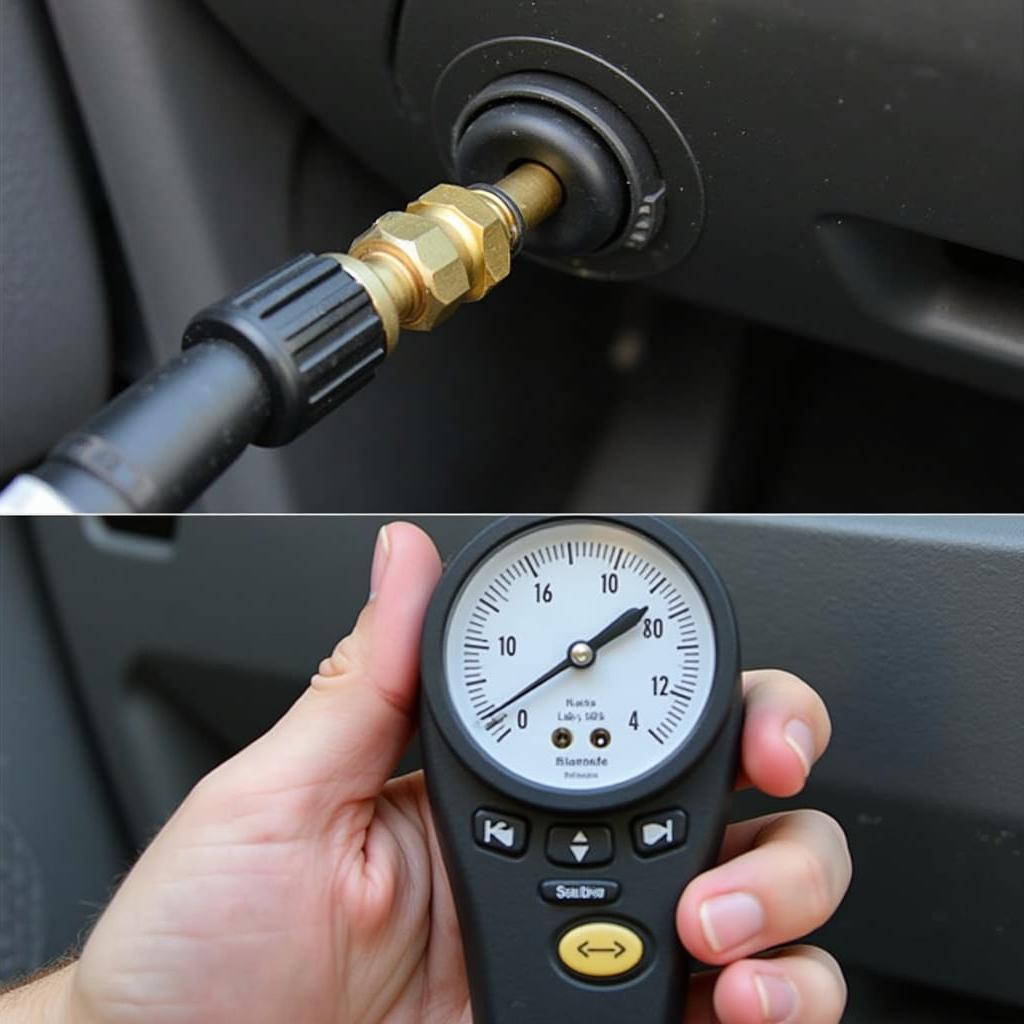Maintaining a well-functioning AC system in your Hyundai Santro is crucial, especially in warmer climates. A properly serviced AC not only keeps you cool and comfortable but also contributes to better fuel efficiency and extends the lifespan of your car’s cooling system. This comprehensive guide will walk you through the essential steps on how to service your Santro car AC like a pro.
Understanding Your Santro’s AC System
Before diving into the servicing process, it’s beneficial to understand the basic components and their functions:
- Compressor: This is the heart of your AC system. It compresses and circulates the refrigerant, a specialized fluid that absorbs and releases heat.
- Condenser: Positioned at the front of your Santro, the condenser functions like a radiator. It cools the high-pressure, high-temperature refrigerant gas, converting it back into a liquid.
- Evaporator: Located inside the dashboard, the evaporator receives the cold refrigerant liquid. The blower motor forces air over the evaporator’s coils, cooling the air blown into the cabin.
- Expansion Valve: This valve regulates the flow of refrigerant into the evaporator, ensuring optimal cooling.
- Receiver/Dryer: This component stores refrigerant and removes moisture from the system.
Common Santro AC Issues
- Insufficient Cooling: This could be due to low refrigerant levels, a malfunctioning compressor, or a blocked condenser.
- Weak Airflow: A clogged cabin air filter or a faulty blower motor can significantly reduce airflow.
- Unusual Noises: Grinding or squealing sounds may indicate a worn-out compressor bearing or a loose belt.
- Foul Odor: Bacteria and mold buildup in the evaporator can cause a musty smell.
Essential Santro AC Service Tasks
1. Refrigerant Recharge:
One of the most common AC services involves recharging the refrigerant. Over time, refrigerant levels can deplete naturally, leading to reduced cooling.
Steps:
- Locate the Low-Pressure Service Port: Consult your Santro’s owner’s manual for its location.
- Connect a Refrigerant Gauge Set: Ensure the engine is off and the AC is turned off.
- Check Refrigerant Pressure: Compare the readings with the recommended pressure levels mentioned in your manual.
- Recharge Refrigerant (If Necessary): Only recharge if the pressure is low. Use the correct type and amount of refrigerant specified for your Santro model.
Important Note: Refrigerant handling requires specialized knowledge and tools. It’s best to have this service performed by a qualified technician to avoid potential hazards and system damage.
2. Cabin Air Filter Replacement:
A clogged cabin air filter restricts airflow, leading to weak cooling and potential strain on the blower motor.
Steps:
- Locate the Cabin Air Filter Housing: It’s usually located behind the glove compartment or under the dashboard.
- Open the Housing: Release the clips or screws securing the housing.
- Remove the Old Filter: Note the airflow direction for proper installation of the new filter.
- Insert the New Filter: Align it correctly and ensure a snug fit.
- Close the Housing: Secure the clips or screws.
3. Condenser Cleaning:
Debris, dirt, and bugs can accumulate on the condenser, obstructing airflow and affecting cooling efficiency.
Steps:
- Locate the Condenser: It’s typically positioned in front of the radiator.
- Clean the Condenser Fins: Use a soft brush, compressed air, or a gentle stream of water to remove debris. Be careful not to damage the delicate fins.
- Rinse Thoroughly: Ensure all dirt and cleaning agents are washed away.
4. Inspecting Belts and Hoses:
Visually inspect the AC compressor belt and hoses for signs of wear, cracks, or leaks. A worn-out belt can affect compressor operation, while leaking hoses can lead to refrigerant loss.
5. Professional AC System Check:
For a thorough inspection and comprehensive service, it’s highly recommended to have your Santro’s AC system checked by a qualified mechanic at least once a year, especially before the summer season. They have the expertise, equipment, and knowledge to diagnose and address any underlying issues.
Expert Insight
“Regular maintenance is key to maximizing the lifespan and efficiency of your Santro’s AC system,” says John Davis, a senior automotive technician with over 20 years of experience. “Don’t wait for problems to arise. Schedule routine checks, especially before the summer months, to ensure optimal performance and avoid costly repairs down the road.”
Conclusion
Servicing your Santro car AC doesn’t have to be a daunting task. By following these essential tips and understanding the basics of your AC system, you can ensure a cool and comfortable ride while extending the life of your car’s cooling system. Remember, professional assistance is always recommended for complex tasks like refrigerant recharging or addressing major AC issues.


